Optimising the Electrified Home – A Battery Management Case Study
Homely is already the best way to optimise a heat pump, but it is possible to go even further into efficiencies and optimisation by combining Homely with other renewables and smart tariffs
For the ultimate in energy efficient, low carbon living, it is hard to beat the combination of a heat pump, solar panels, and domestic battery storage solutions − especially when coupled with smart electricity tariffs where the energy price fluctuates in line with the real-world cost and carbon footprint of grid electricity.
We know from potential customers however that the potential complexity of building and managing such an ecosystem can be a deterrent to adoption.
Homely’s home energy management and automation platform means you can get the benefits without any of the perceived hassle.
During the winter and spring of 2022/23 we’ve been running alpha tests of the platform with households across the UK, and been heartily encouraged by what was observed.
We’ve chosen one household in particular to showcase the potential.
This customer owns solar panels, a 5 kWh battery storage system, and a heat pump. They buy their electricity from the Octopus Agile tariff – where the price you pay as a customer tracks the wholesale electricity price (tomorrow’s prices are published each evening and the rates change twice an hour).
Are you an Installer?
Why not get signed as a Homely installer and be one step ahead of the crowd when our HEMs product is launched.
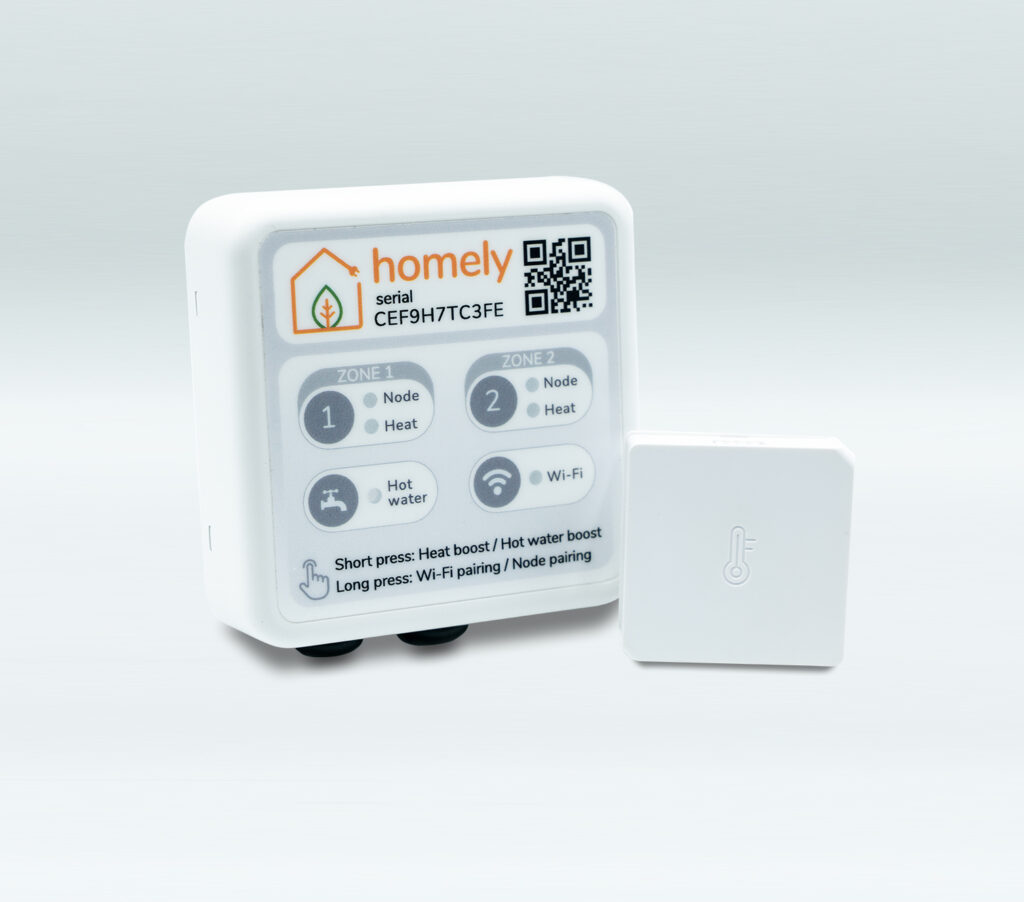
This tariff makes charging a battery and operating a heat pump in the best possible way a complex problem. There are a lot of factors to keep in mind:
- How much should I charge the battery from the grid? Am I going to get enough “free” energy from solar generation to cover my heating? What about the rest of the energy I use at home?
- What constitutes “cheap” electricity? If the price is 11.05p per kWh right now, is that the best it will be? Or should I wait for later?
- Would it be better to heat the house from the grid while the electricity price is relatively low overnight? Or wait for the sun to come up in the morning? And if I heat overnight, should the energy come from the battery or from the grid?
- How warm does the house need to be in the afternoon to ensure it is warm all evening and I don’t import any grid electricity during the evening price peak? And how warm is too warm?
- What about export payments – how does that tariff change my strategy?
Clearly, with rare exception, most people won’t relish adding this sort of decision-making exercise to their evening routine. Plus, even if they were able to concoct a perfect plan, communicating it to the battery and heat pump alike is a further obstacle and a potential point of failure.
That is why the results we are seeing from Homely are so exciting. It does all of the above for the homeowner. Every single time.
Here's a real life example...
April 28th 2023 is unseasonably cold. The outdoor temperature ranges from 8 °C at night to 12 °C during the day, prompting some who had turned their heating off in early April to click it back on again.
It is also fairly gloomy: cloudy in the morning, with the sun coming out only sporadically and briefly later in the afternoon.
You can broadly split the day into five phases:
- Early hours – low prices but no solar PV
- Morning – fairly high prices and very little solar PV
- Early afternoon – low prices and still limited sunshine
- Afternoon – peak prices but now plenty of sun
- Evening – prices remaining high, no sun
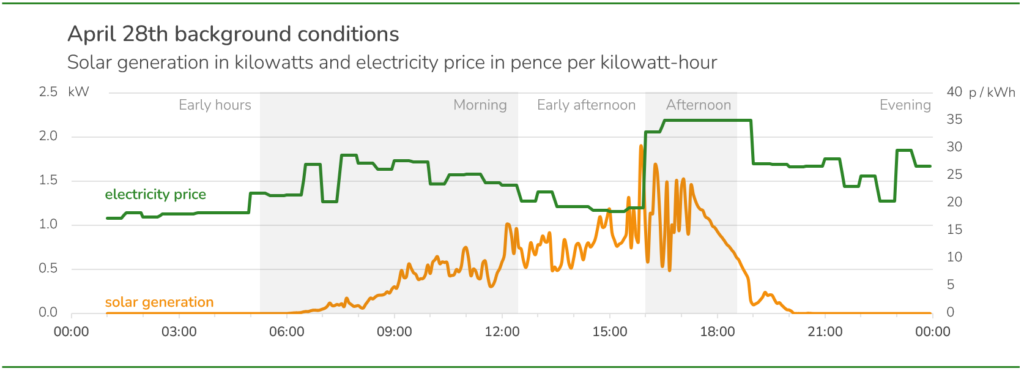
Morning
After dawn, Homely seeks to heat the house as gently as possible – “low and slow” being the most efficient way to operate a heat pump.
It uses the battery to do this heating to avoid importing high cost electricity from the grid.
Interestingly the battery only charges to 41% on cheap overnight electricity, which at first glance might seem inadequate ahead of a colder, cloudy day. But it turns out to be good judgement by Homely – just enough electricity to heat the house for the morning, proving the value of Homely’s analysis of solar and heating forecasts.
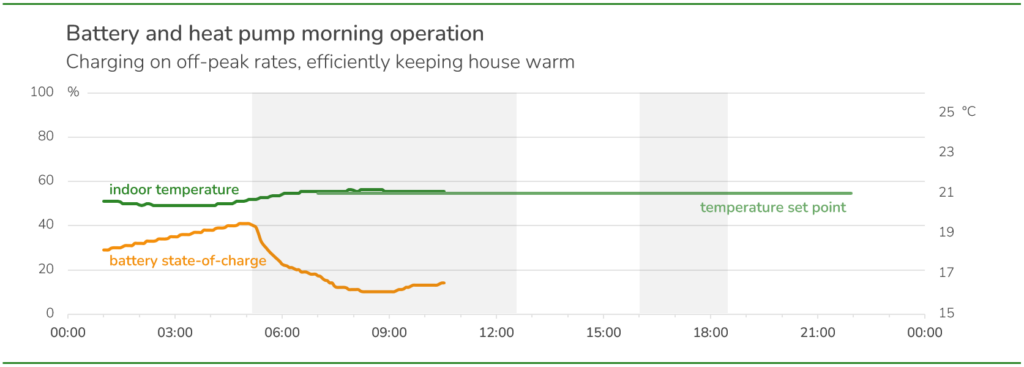
Afternoon and Evening
In the afternoon things change.
As the sun starts to come out the heat pump kicks in, gradually raising the temperature of the flow to the radiators from its normal level of around 30 °C up to 45 °C by 4pm.
This customer has specifically told Homely he is happy for the house to get as hot as 26 °C if it works out cheaper overall (which in this case it did). All Homely customers on Smart Tariffs can choose to allow their house to “overheat” by up to 5 degrees to take advantage of low-cost electricity in this way.
By the evening the house is warm so no more heating is required. The battery charges as the sun goes down and then supplies energy to the house – enough to last until the next morning.
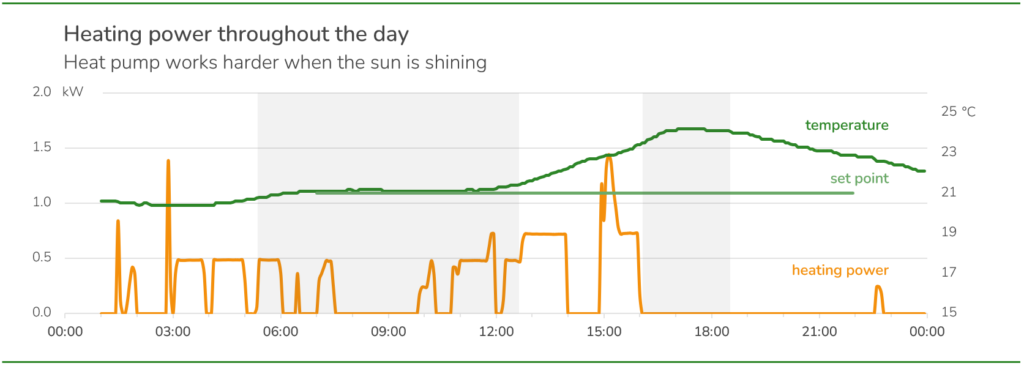
Overall Impact
Over the whole day, imports from the grid are minimised, and almost all occur during the cheapest times (in the early morning and mid-afternoon).
Pleasingly, hardly any solar energy went to the grid – virtually all power produced by the solar panels was used by the customer.
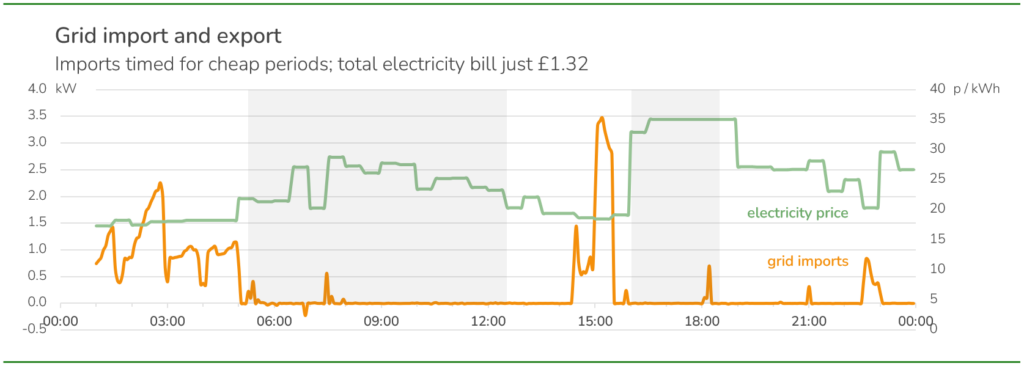
What’s Next?
We believe this case study illustrates the clear value of using Homely as a Home Energy Management system. All the optimisation, all the savings, no complex manual interventions for homeowner or installer.
By seamlessly integrating solar panels, battery storage, and a heat pump, Homely offers an unbeatable and unrivalled solution for energy-efficient low-carbon living.
Keep an eye out for further announcements as we press towards launching these capabilities.
Are you an Installer?
Why not get signed as a Homely installer and be one step ahead of the crowd when our HEMs product is launched.
